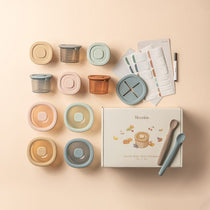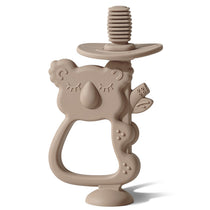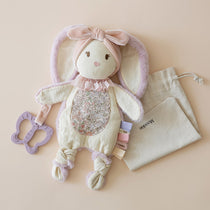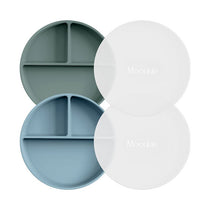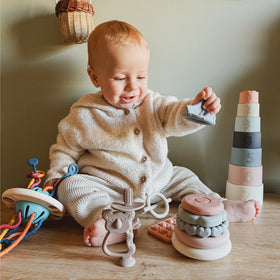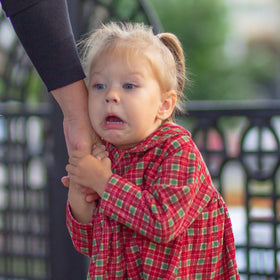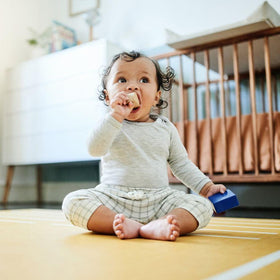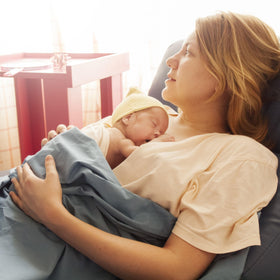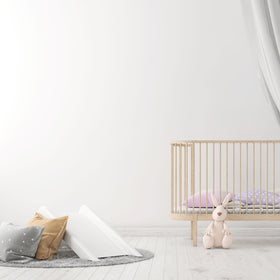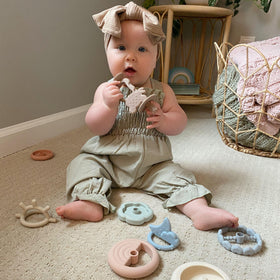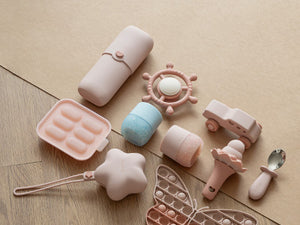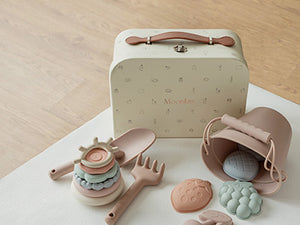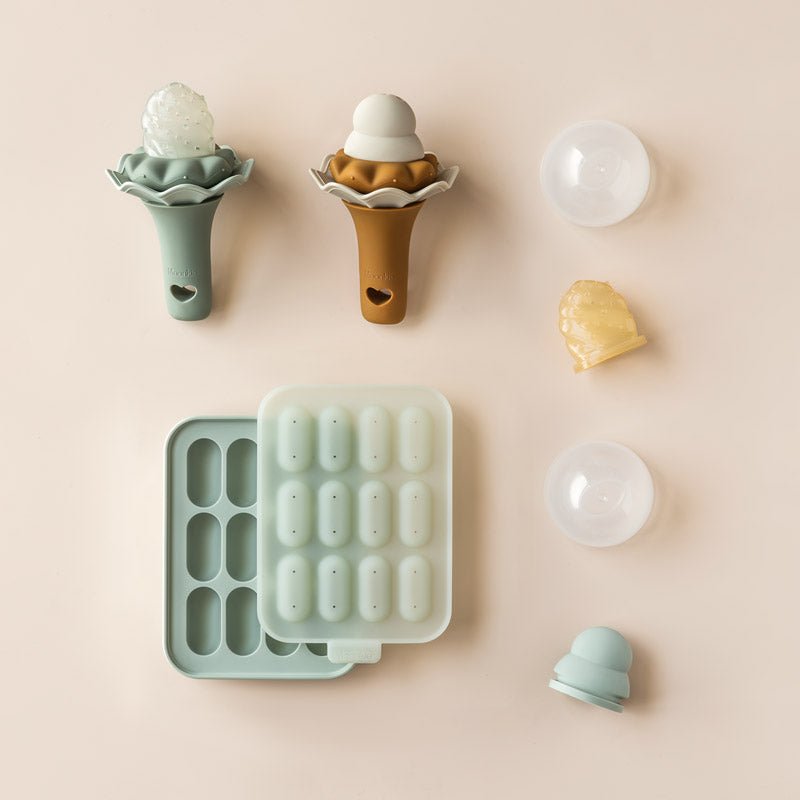
If the thought of reusable cloth diapers grosses you out, think about them in terms of savings, eco-friendliness, and health. Reusable cloth diapers are much easier on the wallet, but are they worth the hassle?
Reusable cloth diapers are an environmentally friendly and cost-effective alternative to disposable diapers, even when calculating the average cost of water and laundry detergent in America. Carefully selecting a cloth diaper brand and setting water-saving cleaning habits will maximize your savings.
But with so many options on the market, it can be overwhelming to start. That's why I've put together this ultimate guide to reusable cloth diapers. If you're debating whether to dive into reusable cloth diapers, this guide will be helpful!
Why Are Cloth Diapers a Thing These Days?
The average baby goes through about 7,000 diapers before potty training, and with the average cost of one diaper being somewhere between 20 and 30 cents in America, that's a significant cost (source)!
But why should baby parents consider cloth diapers nowadays? Disposable diapers are so convenient for busy parents. You don't even have to touch baby poop these days!
The Cost of Disposable Diapers
Like most modern inventions, disposable diaper convenience comes at a significant cost to the environment, a parent's wallet, and a baby's health.
Environmentally, 300,000 disposable diapers are thrown away every minute around the world (source). Some are incinerated, while others go to landfills or end up outside. An estimated 2% of all landfill waste is disposable diapers (source). The scary thing is that those diapers won't break down for about 500 years (source)!
Cost estimates of disposable diapers in America span a vast range, depending on where you live, whether you buy in bulk or in small packages, and the brand you use. The U.S. average comes to 20 or 30 cents per diaper, which, when multiplied by the 7,000-diaper use average, means Americans spend $1,400 - $2,100 per baby on disposable diapers.
When you look at the upfront cost of 15 to 20 reusable diapers, averaging $80 - $130, you can see the ridiculous savings reusable diapers can bring financially, even after adding $500 for a diaper cleaning setup, baby-safe laundry detergent, and water usage.
Types of Reusable Cloth Diapers
Once upon a time, everyone used cloth diapers, sometimes with rubber pants, to make them leakproof. But I'm not talking about white cloths fastened with safety pins; cloth diapers today have come a long way!
One challenge to starting with reusable cloth diapers is choosing a structure that works for you and your baby.
Reusable Diaper Type |
Description |
Prefold Diapers |
|
Fitted Diapers |
|
Pocket Diapers |
|
All-in-One Diapers |
|
How to Choose the Right Cloth Diapers for Your Baby
In choosing the right diaper for your baby, think about your priorities. If you want a diaper with zero synthetic material, then old-fashioned cloth diapers are probably the way to go. If you want something super leakproof, opt for the all-in-one or the pocket diaper.
Would you rather use inserts or all-in-one diapers? The pro of pocket diaper inserts is their ability to soak up moisture. With inserts, you can swap out insert materials for summer heat, winter cold, growth spurts, illness, or random changes in lots of pee to lots of poo.
I loved using charcoal bamboo or hemp-cotton diaper inserts for my kids' pocket diapers. They wicked moisture well, were easy to clean, didn't stain easily, and dried quickly on the clothesline.
However, if you don't want to wash and line-dry two pieces for every diaper, go for the all-in-one style. If your baby is a newborn or really tiny in the first couple of months, you may need to use classic prefold diapers until her legs fill out the leg space for pocket or all-in-one diapers.
How to Care for Reusable Cloth Diapers
If you think caring for reusable cloth diapers is disgusting and time-consuming, you would be half right. Pee is obviously a lot easier to clean than #2, but once you get a system going, cleaning cloth diapers becomes a regular evening chore that you do without thinking much of it.
I suggest investing in a diaper sprayer splatter shield (a large funnel with clips at the top) that sits on top of your toilet, a stiff toilet brush, a handheld shower head, and a five-gallon bucket with a screw-on lid for cloth diaper cleaning. I've tried a lot of different methods, but this setup was the best for my routine.
How Do I Clean Reusable Cloth Diapers?
Once your baby wets or dirties a cloth diaper, change it, and put the soiled diaper in a waterproof reusable bag until you can clean it. It is best to rinse it off and put it into a soak bucket right away, but that's not always realistic.

At the end of the day, you may have a stack of dirty diapers to clean. Clip one end of the diaper to the top of the spatter shield and rinse it off with your handheld shower head. If you've got a stubborn dirty diaper (solid food will do that), use a sturdy toilet brush solely dedicated to cleaning poopy diapers.
Once each diaper has been rinsed, put it into a five-gallon bucket with soapy water. This pre-soak will help keep any smells or stains away. After you've got five to eight diapers and their liners in that bucket, toss them into the washer to wash them according to the instructions you received from the maker.
I washed my kids' diapers with hot water and sensitive baby skin detergent. You don't need to add the extra chemicals in a fabric softener, but if you want to use something, add 1/8 cup of white vinegar to the rinse cycle.
When the diapers are done in the washer, hang them on a clothesline or a sock-drying rack with clips. When it rains outside, you can hang them on an extension rod in the shower with a fan or tumble dry them in the dryer. Avoid using the dryer with heat because it will weaken the elastic and wear the diaper out faster.
Experience note: I noticed that whenever my baby's pocket diapers were dried in the dryer, they did not soak up pee very well. After another wash and line-dry cycle, they worked just fine again.
Should I Use a Special Detergent for Cloth Diapers?
Yes! Use a detergent designed for baby's skin with as few chemicals as possible. If you purchase unscented detergent, you will further decrease the chemicals put against your baby's skin day in and day out.
If your little one develops eczema or psoriasis, then you will need to consult your pediatrician for a detergent designed to not irritate your little one's skin.
After a few washes and time drying on a clothesline, you may notice that diaper inserts become a bit crunchy. Just tumble dry them in the dryer with no heat for a few minutes to soften them.
What Do I Do With Poopy Cloth Diapers While Out and About?
This can be a crappy situation! In all seriousness, you don't want a poopy diaper wrapped in a Walmart sack sitting in your car in the summer sun. So what can you do? Use a waterproof reusable diaper bag.
Many shops and brands now include a couple of these nifty bags with a reusable diaper set purchase, but if you need more, you can find them on Amazon. If your little one has begun eating solids and dumps remarkably stinky loads, you can double-bag it!
Another option for parents is to use disposable diapers when out and about for a few hours. Not every baby's skin can switch back and forth between disposable and cloth diapers, but if yours can, this may be a convenient option. Ideally, parents would all be able to use cloth diapers constantly, but reality occasionally begs to differ.
How to Remove Stains from Cloth Diapers
Cloth diapers will stain from time to time, and that's okay! It would be weird if they didn't. To remove stains naturally, place washed diapers outside in direct sunlight for two or three hours. Most stains lessen significantly in that time.
If a stain is still going strong, saturate the stained area with straight lemon juice and put it in the sun again. After the stain fades or disappears, rewash the diaper to rinse out the lemon juice; lemon would likely burn your little one's bottom.
Should a particularly stubborn stain persist, you can purchase a commercial stain remover, like "The Amazing Whip-It" or "Oxiclean."
Common Concerns and Misconceptions About Reusable Cloth Diapers
Though they are significantly cheaper and better for the environment, reusable cloth diapers still drum up a lot of concerns and misconceptions.

Here are a few for your perusal.
Is It True That Cloth Diaper Babies Get Fewer Diaper Rashes?
Reusable cloth diapers are better than disposable diapers for diaper rash and other skin irritationsif your baby already has sensitivities to chemicals in normal diapers.And that benefit only comes when you stay on top of changing that reusable diaper immediately.
Baby skin doesn't do well with moisture being trapped against it for extended periods, despite the type of diaper you use. Skin needs air and cleanliness! Disposable diapers use a polymer-based layer to wick away moisture and keep it off your little one's bottom. Still, some wee ones' skin doesn't tolerate the chemicals in disposable diapers.
As a parent, you will simply have to experiment to see what sensitivities your little one has. I just happened to have two babies who broke out in an itchy rash with most disposable diaper brands, so I had to use cloth diapers. Honestly, I'm so glad I did!
Are Reusable Diapers Uncomfortable for Babies to Sleep In?
Nope! Your baby will sleep fine in a reusable cloth diaper! Some reusable diapers, particularly the pocket diaper design, are thick and may seem uncomfortable for your little one. But they are snug and warm, which little ones tend to like early on!
If your baby has trouble keeping breastmilk or formula down, you can either purchase slimmer inserts for the pocket diaper design or slightly elevate one side of your little one's bassinet or crib. You can also purchase a wedge pillow designed to keep your wee one tilted upright just enough to keep milk down.
As your little bug grows, you may find that he likes to take his diaper off. Check to see if you are fastening his reusable diaper too tight. If not, you may just have a baby who loves being unencumbered!
Are Cloth Diapers Too Hot in the Summer?
This depends on where you live, the type of diaper you purchased, and the diaper's material. The main problem for reusable diapers is moisture. If you live in a location with hot, steamy summers, you will need to purchase a lighter cloth diaper design and change the diaper soon after use.
If you opt for the pocket diaper, choose inserts designed for moisture-wicking, like charcoal bamboo fleece (not entirely natural) or a hemp-cotton blend. These inserts performed amazingly well for my babies in a wet subtropical location.
I also let my babies stay in just diapers most days at home to keep them from sweating much. When venturing outside, I simply kept them hydrated, shaded, and changed as soon as they wet their diapers. It worked well!
Is Switching Between Cloth Diapers and Disposable Diapers Okay?
Some parents like to switch to disposable diapers when traveling to avoid carrying around a wet bag full of stinky surprises. This is incredibly convenient if you will be overnighting somewhere that doesn't have a way to rinse and wash those diapers.
In such cases, you can purchase disposable diapers for the trip if your little one's bum can handle the switch. Mine couldn't go back and forth, especially in the summertime. They both broke out in an itchy rash whenever I put them into disposable diapers for travel emergencies.
If you are able, you can spend a little more to buy eco-friendly disposable diapers that will break down in a landfill. Though these are not eco-friendly in production, they eventually break down in the elements, so using them in a pinch (baby skin allowing) will make traveling more convenient.
Can I Reuse Cloth Diapers for the Next Baby?
I did. When my second came along, we had an extremely tight budget. So, I reused the first baby's cloth diapers for the second. I only had two diapers with stubborn stains and worn-out elastic that I tossed. The others were fine and worked well.
If you have another baby on the way, wash the used cloth diapers well, treat any remaining stains, and throw out anything with a funky smell. A foul odor is indicative of bacteria.
If the elastic is worn out, you can replace it or take it to a seamstress, who will repair it. Fixing a reusable diaper is much cheaper than replacing it! If you find that the inserts are not soaking up moisture well enough, then replace them.
Though I reused cloth diapers between my own kids, I do not recommend using someone else's used cloth diapers. You don't know how well they were cleaned and maintained, how they were stored, or what kinds of chemicals were used to clean them. In this case, it is best to stick with what you know!
If you are curious about other environmentally friendly baby products you can use, check out The Ultimate Guide to Reusable Essential Baby Products. Aside from sharing a list of sustainable product options for baby necessities, I also describe reusable wipes and how to make them at home.
In a Nutshell
There you have it! Reusable cloth diapers are a fantastic option for eco-conscious baby parents on a budget. They are overall more cost-effective, friendlier to your baby's bottom, and a better choice for the environment. Though cleaning reusable diapers adds another daily chore to your list, they are worth the effort!


